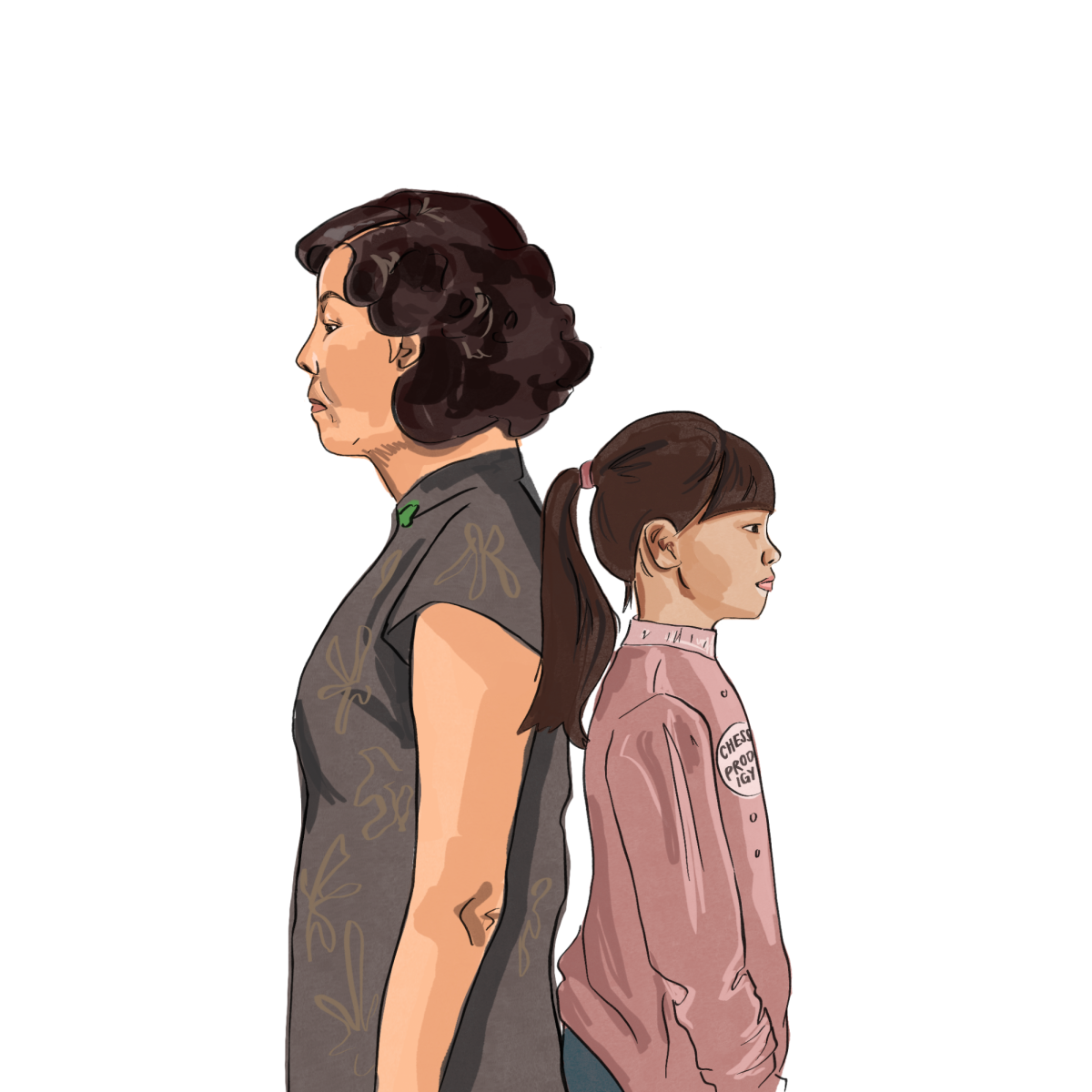After an intensified state-wide political crackdown on homelessness following recent court rulings, the Bay Area is caught in an imbalanced pendulum of transitioning the homeless to stable shelters and long-term dignity-based solutions for unhoused families.
The urgency of the issue is underscored by the United States Supreme Court’s ruling on June 28 that granted cities the authority to ban people from “camping” on public property and the right to clear encampments — even when there is no shelter available. Nearly a month after the ruling, California Governor Gavin Newsom mandated state agencies and local governments to adopt policies that would sweep away encampments on state property in an executive order.
In Palo Alto’s political maneuver to make tangible improvements for the unhoused while also complying with state mandates, the issue remains complex. Immediate relief for the unhoused requires urgent action for our community’s well-being. However, the root causes of the problem call for systemic changes and innovative treatment at the national and state levels.
National Level
The U.S. Supreme Court ruling stems from a 2018 lawsuit, Grants Pass, OR v. Johnson, Gloria, et al. This case involved the Camping Ordinance in Boise, Idaho, which made camping and sleeping in public or private places without permission a criminal offense. The Ninth Circuit, a federal appeals court, ruled against Idaho, citing that the ordinance violated the Eighth Amendment’s protection against criminalizing unsheltered individuals. Ultimately, Boise was prevented from wrongly assuming that these people were voluntarily homeless and had a choice in their circumstances. This year, in a decision with six in favor and three dissenting, the supreme court declared that Grant’s Pass laws were not unconstitutional.
The ruling effectively removed long-standing legal constraints on cities. Now, cities could arrest and fine unsheltered individuals. The court’s syllabus defines that the local government may criminalize people who are homeless for “sleeping outside with as little as a blanket” because “there is no . . . separation between being without indoor shelter and sleeping in public — they are opposite sides of the same coin.”
From another perspective, the ruling of Grants Pass crushed the humanization of the unhoused and would further intensify the growing homelessness crisis, as noted by Supreme Court Justice Sonya Sotomayor.
“Sleep is a biological necessity, not a crime,” she wrote in her dissent. “For people with no access to shelter, (this ruling) punishes them for being homeless. That is unconscionable and unconstitutional.”
State Level
Governor Gavin Newsom’s executive order in July, following the Supreme Court ruling, emphasized local government’s responsibilities in combating the homelessness crisis.
“We (now) have no excuse with the Supreme Court decision,” he said in a video statement on X. “This executive order is about pushing that paradigm further and getting the sense of urgency that’s required of local governments to do their job.”
Homelessness in California exacerbates the national issue with 9,903 people experiencing homelessness in Santa Clara County, according to the 2023 Point-in-Time Count. Having 180,000 homeless individuals, the Golden State had more than one-quarter of the nation’s total, as noted in the New York Times.
There are three subpopulations of people experiencing homelessness in California: 80% are adults without children, 14% are families with children and 7% are unaccompanied youth ages 24 and younger, according to the California Budget and Policy Center.
Furthermore, California senior policy analysts Monica Davalos and Sara Kimberlin, state in their article, “Sustain Diverse Housing Interventions Is Needed to End Homelessness,” that different interventions are needed to ensure that individuals experiencing temporary or chronic homelessness secure and maintain housing. Homelessness at any age causes hardship, whether it is financial or physical. The conditions have an especially profound impact on unhoused youth, a demographic which often includes those who identify as LGBTQ+, teenage parents or children who are running away due to neglectful or unsafe dynamics at home.
Often, it is the oversimplified understanding of being “homeless” that hinders productive progress in the right direction, emphasized Palo Alto Council Member Greg Tanaka.
“If we dealt with each situation one-by-one and case-by-case, I think we’d get a lot more headway,” he said. “But I think because of the name itself, unfortunately, (homelessness is) not properly dealt with and assumes the root cause is simply a lack of a house.”
In San Francisco, city leaders had the U.S. Supreme Court for months legal battles with the crisis.
The Point-in-Time count by the Homelessness and Supportive Housing sheltered and unsheltered population from 7,754 to 8,323 people.
In September 2022, the Coalition on Homelessness filed a lawsuit, alleging that San Francisco violated the U.S. Constitution by clearing homeless encampments and homeless people’s property.
American Civil Liberties Union of Northern California senior attorney John Do who is representing the Coalition on Homelessness, maintained that his side would move forward no matter the outcome of the Grants Pass Case.
“(The Supreme Court’s) shameful decision guts a key civil rights protection for unhoused people, but it will not derail our lawsuit against San Francisco, which has policies and an ordinance requiring the city to offer shelter before clearing encampments,” he said in a statement.
San Francisco has decided to take the granted definitive authority as the city is pressured to reduce homelessness. Penalties may become progressively more stringent with each instance in a breach of the law, affirmed by San Francisco Mayor London Breed, who spoke to San Francisco Examiner reporters.
“We’re offering help, we’re offering services, but we also have a lot of restrictions with the laws, and I think (the Supreme Court) decision has really provided us with clarity that we will use in order to be a lot more aggressive with people who are choosing to stay on the streets,” she said
Regional Level
Regional partnerships could be one way to respond to the homeless crisis in the local area. Currently, some Peninsula cities are combining their resources, using a more humane and coordinated approach to combat this increasingly nuanced social issue.
For example, East Palo Alto Mayor Antonio López proposed a mutual “regional partnership” in August. This would include a collective fund for neighboring cities, including Palo Alto, to share resources for shelters, mental health services and permanent supportive housing. López plans to propose a city ordinance to remove East Palo Alto encampments in late September, and if the city proceeds, it would give people two warnings to clear out their belongings and move into a shelter. The city will not issue citations or relocate people who might refuse shelter, López said at an August press conference in East Palo Alto’s Martin Luther King Jr. Park.
“This will be done in order to leverage our resources collectively and minimize the migration of the unhoused from jurisdiction to jurisdiction,” he said.
According to an East Palo Alto press release, the Palo Alto City Mayor Greer Stone supports this multi-city initiative and sees it as an ethical approach to people who reject services but need the assistance.
“Having a plan in place, where we have similar policies from city to city is going to make the most sense,” Stone told The Almanac online. “I think that East Palo Alto’s approach is the right one.”
County Level
In 2022, 274 people were homeless in Palo Alto, a slight decrease from the 313 in 2019, which is from most recent information in the Santa Clara County Point-in-Time Count on Homelessness. For Tanaka, the reduction reflects the work of many advocacy groups. However, solutions will need to include a tougher stance in shifting the narratives of those who are unhoused.
“Homelessness is just a ‘catch-all’ phrase,” he said. “(The issue) has been tough to solve because we think it’s one issue: A lack of home. It’s a lot more complex with root causes including drug abuse, domestic abuse and youth running away.”
CEO of ConXion to Community Rose Amador, a local nonprofit providing job training and education to previously incarcerated or unhoused individuals and families in Santa Clara County, struck a similar tone. The double bind of transitioning the unhoused to long- term shelters often involve loosing a special connection that they’ve built with their encampment spaces and communities.
“People need help,” she said. “They don’t need to be uprooted and moved from one place to another so often. They lose a lot of their belongings and pets. (The City of San Jose) is going to have sanctioned places where people can set up a tent, but a lot of people will still feel attached and familiar to their original area.”
“We had several people from our Day Worker Center who actually secured low-income housing, where they had to pay some rent, after living in their cars and trucks,” she said. “However, there are others who don’t want change, and so they cannot get the social, economic and mental help they need.”
Further decisions on housing and homelessness are a key focus at all levels as the Bay Area enters the presidential, state and local elections.
Student Perspective
For freshman Cordelia Hayes, interest in helping and humanizing the unhoused community extends beyond a state-level initiative. In recent months volunteering as a Student Community Liaison for LifeMoves, a local nonprofit, Hayes has facilitated meetings between schools, faith-based organizations and nonprofit services to discuss her idea of having a “definite point of contact.” This may include a designated individual or team that oversees volunteers and their needs in order to combat the turnover and pause in service when students graduate and support staff leave.
A nationwide survey of homeless service workers by the Homelessness Research Institute identifies that 71% of the respondents experience high employee turnover in their organization. Additionally, 44% of them report that they are overwhelmingly impacted by low salaries and difficulties with paying for their housing.
“Creating a consistent point of contact (for the LifeMove’s office) is not the first thing that you picture when you think of charity work, but that’s what I can do to help,” Hayes said. “Anything anyone can do to help has a massive impact.”
As the homelessness crisis intersects with changing policies, Hayes hopes that students continue educating themselves on the issue and understand that solving homelessness requires recognizing its proximity to our own lives.
“They’re just people,” she said. “People tend to think of homelessness as an outside experience, but more people than you would think are one hospital visit away, one layoff away from homelessness. So it’s an issue that’s closer to home than you could ever imagine, especially when you’re seeing it face-to-face.”
































